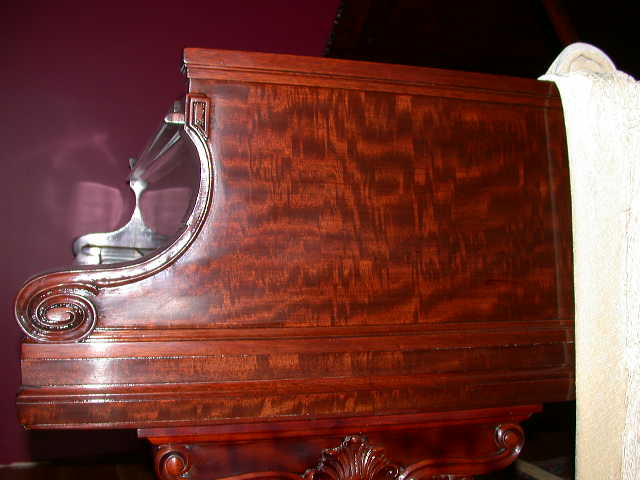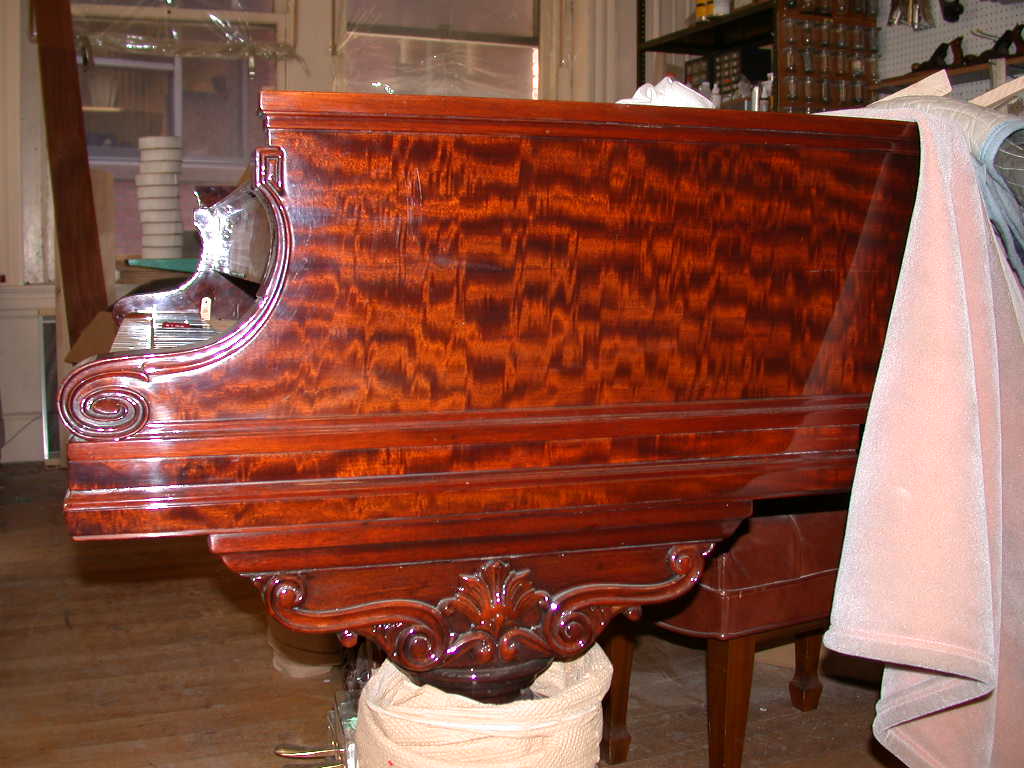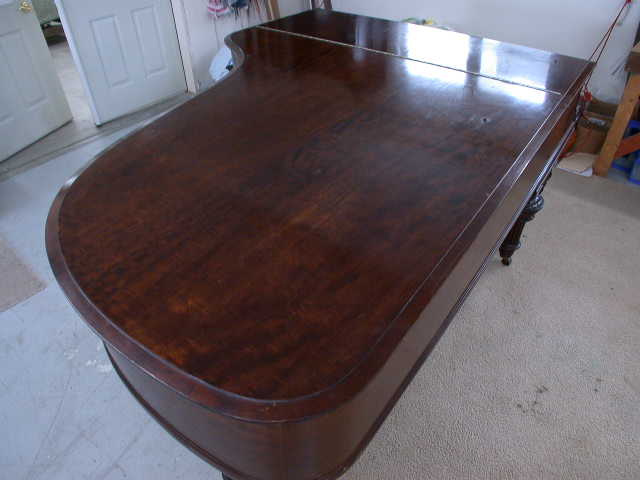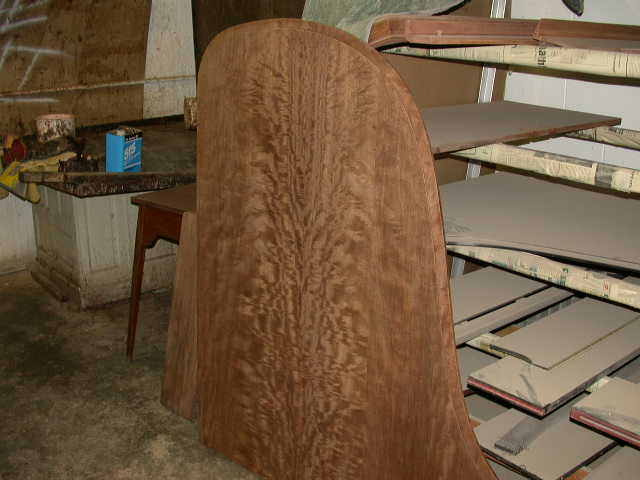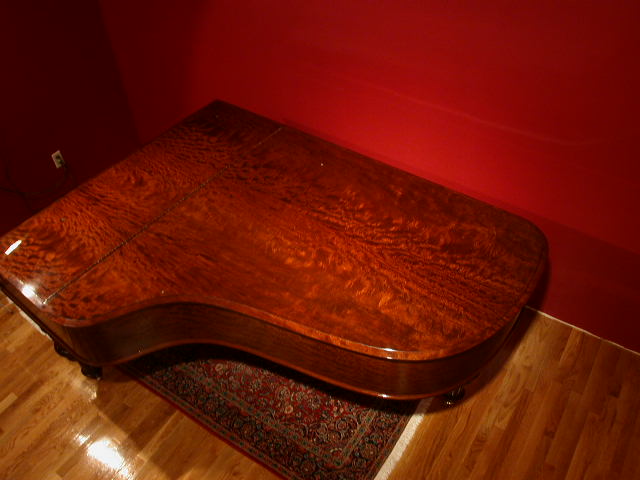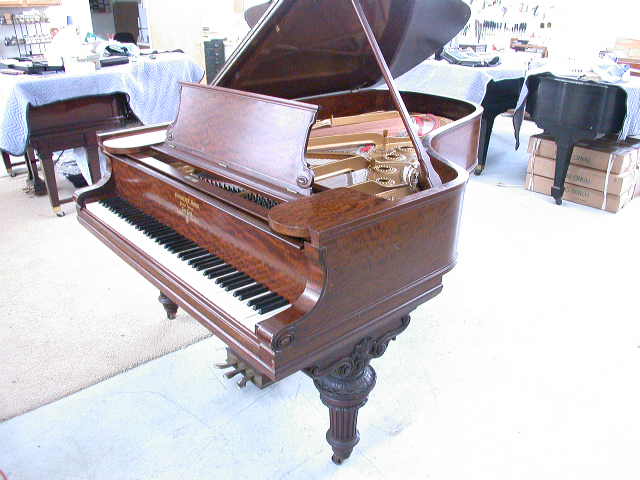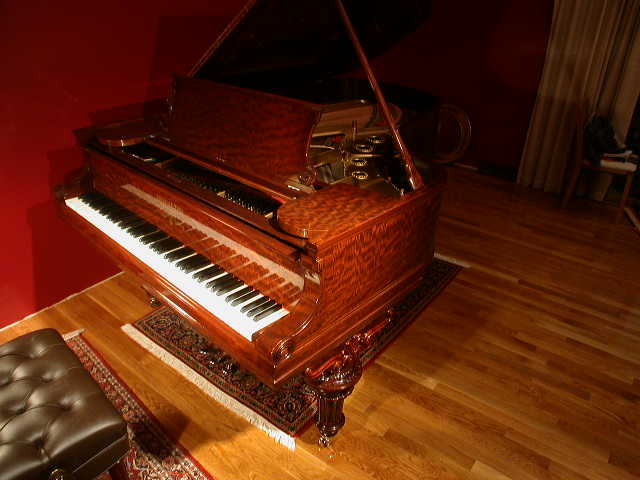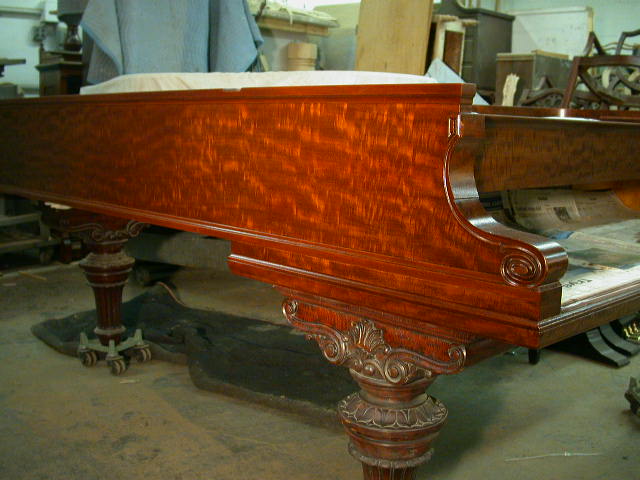
|
A Steinway Project
|
||||
|
The Refinish
|
||||
|
We treated refinishing, like voicing, or rebuilding, in thinking it is best done by finding a piano that is where
you want yours to be. In this case, it was easy once we saw the finish on this 1904 S&S C. One year older than ours. I'd
say it could have been the same tree, but probably not. This mahogany cut is highly uncommon on new pianos, but there are a number of Steinways that had it from this era. The
terms flame, ribbon, and honduras are almost interchangably used. While I don't think its ribbon mahogany, I will say most
described it as a process of veneering that is highly governed by the angle of cut more than by selection, or the origin,
of the wood. In fact, it theoretically could be reproduced today, despite ads suggesting the contrary.
|
|
